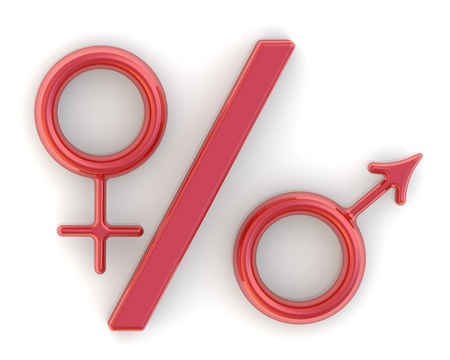In Animals, Female Scarcity May Stimulate Male Same-Sex Behavior
April 15, 2016 by Justin Lehmiller
Sexual contact between members of the same sex has been documented in numerous animal species. Several scientific explanations for this phenomenon have been proposed over the years, many of which have argued that the underlying reason may be adaptive. For example, the social glue hypothesis argues that same-sex behavior evolved because it plays a role in the establishment and maintenance of relationships among members of the same sex.
However, a new study published in the journal Behavioral Ecology suggests that animals’ same-sex behavior may not necessarily need to have an adaptive cause. Instead, it may sometimes arise from very specific environmental factors, such as a high population density combined with a heavily skewed sex ratio.
In order to provide support for this idea, a team of researchers conducted behavioral observations of Hermann’s tortoises on Golem Grad Island, located in the Republic of Macedonia. Specifically, they looked at tortoises’ mating behaviors on different parts of the island—parts in which the sex ratio naturally happens to be very different.
On the shoreline, about 23% of the adult population is female, compared to just 5% on an area referred to as the plateau. Effectively, the means that finding a female partner is much harder on the plateau than it is elsewhere on the island.
Over a 7-year period, researchers performed more than 7,500 behavioral observations on the shoreline and plateau. Blood samples were also collected from some of the tortoises in order to test for linkages between testosterone levels and sexual behavior.
The researchers found that male same-sex behavior was common in both parts of the island, but it occurred most frequently in the area with the most heavily skewed sex ratio. Specifically, on the plateau (where just 1 in 20 adults is female), most sexual behaviors observed (74%) occurred among members of the same sex. By contrast, only one-third (33%) of sexual behaviors occurred among members of the same sex on the shoreline (where 1 in 5 adults is female).
It is important to note that same-sex behavior was observed across multiple male tortoises. In other words, it wasn’t just a small number of them that were engaging in this activity.
Male same-sex behavior was also correlated with higher levels of testosterone. We’re talking about testosterone levels that were within the normal range, though, so it wasn’t the case that abnormally high testosterone levels were linked to same-sex behavior.
To sum it up, it appears that environmental factors (particularly, a high population density combined with a scarcity of females) likely interacted with hormone levels (high testosterone) in order to produce same-sex behavior in this case.
The study’s authors described this phenomenon as evidence of a possible “prison effect” in which “depriving individuals of members of the opposite sex causes them to engage in sexual interactions with members of the same sex.”
However, it’s worth noting that these factors weren’t just linked to same-sex behavior, but also to a number of other sexual behaviors. As noted by the authors of the study, male tortoises on the plateau were also more likely to be observed: “mounting juveniles, dead males, and tortoise skeletons (empty shells of males). Two were seen attempting to copulate with stones that vaguely resembled a tortoise.”
In light of these additional findings, the authors went on to argue that “strong sexual motivation of males can overrule accurate discrimination of appropriate sexual partners.”
Although the findings of this study are fascinating, remember that this research focused on tortoises, not humans. Thus, when considering the implications, be advised that this study is not meant to speak to or yield conclusiosn about the origins of human sexual orientation.
Want to learn more about Sex and Psychology? Click here for previous articles or follow the blog on Facebook (facebook.com/psychologyofsex), Twitter (@JustinLehmiller), or Reddit (reddit.com/r/psychologyofsex) to receive updates.
To learn more about this research, see: Bonnet, X., Golubović, A., Arsovski, D., Đorđević, S., Ballouard, J. M., Sterijovski, B., … & Tomović, L. (2016). A prison effect in a wild population: A scarcity of females induces homosexual behaviors in males. Behavioral Ecology.
Image Source: 123RF.com/Vladimir Ochakovsky
You Might Also Like:

Dr. Justin Lehmiller
Founder & Owner of Sex and PsychologyDr. Justin Lehmiller is a social psychologist and Research Fellow at The Kinsey Institute. He runs the Sex and Psychology blog and podcast and is author of the popular book Tell Me What You Want. Dr. Lehmiller is an award-winning educator, and a prolific researcher who has published more than 50 academic works.
Read full bio >


